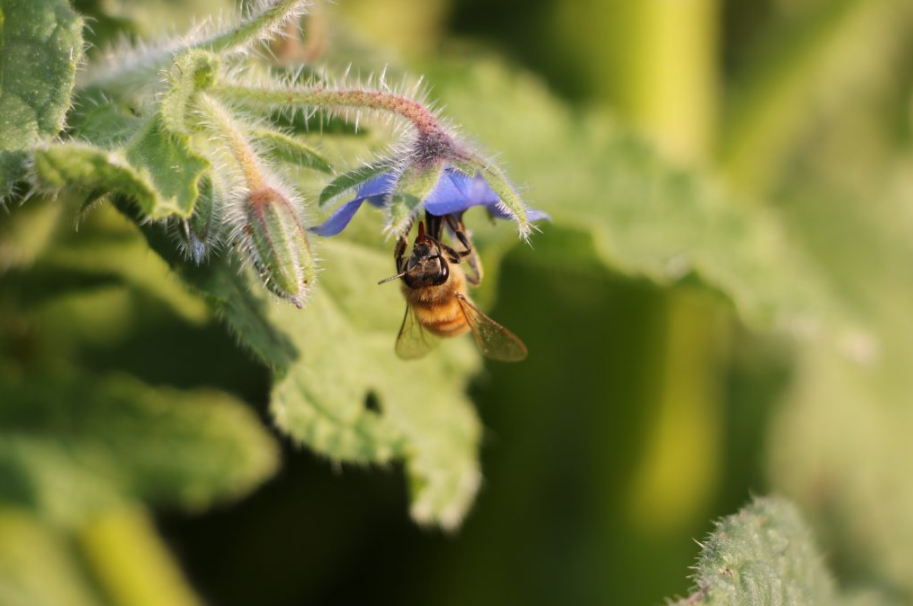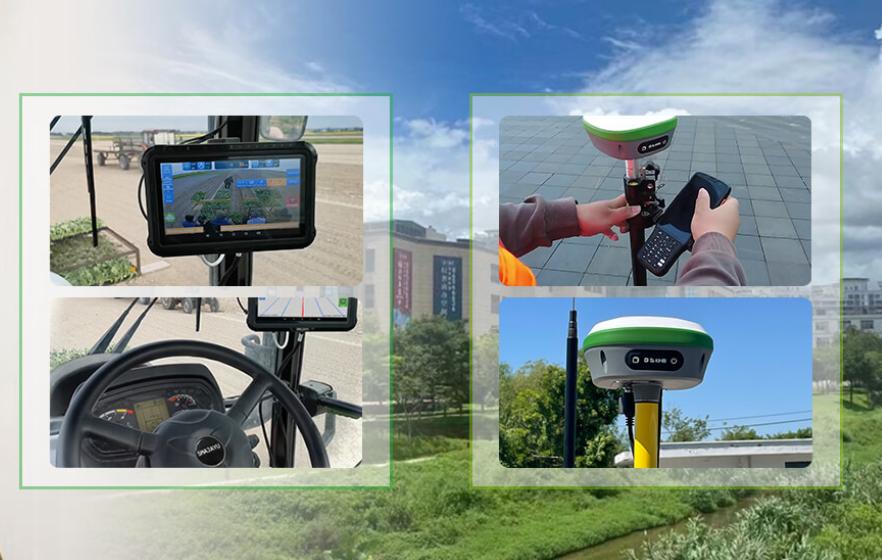In recent years, there has been a notable shift in agricultural practices towards regenerative agriculture. This movement, driven by a growing awareness of environmental sustainability and a need to address the challenges posed by conventional farming methods, has gained significant momentum. In this blog post, we'll explore the popular trends of regenerative agriculture, its potential to address pressing agricultural issues, and how cutting-edge technology like the SMAJAYU RTK GNSS system is revolutionizing farming practices.
The Shift Towards Regenerative Agriculture
Regenerative agriculture is more than just a buzzword; it's a fundamental shift in how we approach farming. Unlike conventional agricultural practices that often degrade soil health, deplete natural resources, and contribute to environmental degradation, regenerative agriculture focuses on restoring and enhancing ecosystem health. This approach encompasses a range of practices, including minimal tillage, crop rotation, cover cropping, and holistic grazing management.
One of the key trends driving the adoption of regenerative agriculture is a growing recognition of its potential to mitigate climate change. By sequestering carbon in the soil through practices like cover cropping and agroforestry, regenerative agriculture has the potential to significantly reduce greenhouse gas emissions and help combat global warming. Additionally, regenerative practices can improve soil fertility, increase water retention, and enhance biodiversity, making farms more resilient to extreme weather events and pests.
Addressing Agricultural Challenges
Regenerative agriculture holds promise in addressing a myriad of challenges facing the agricultural industry today. One of the most pressing issues is soil degradation, which threatens the long-term productivity of farmland. Conventional farming practices such as intensive tillage and monocropping can lead to soil erosion, compaction, and nutrient depletion. In contrast, regenerative practices build soil organic matter, improve soil structure, and promote microbial diversity, resulting in healthier, more productive soils.

Water scarcity is another critical issue that regenerative agriculture can help mitigate. By improving soil structure and increasing organic matter content, regenerative practices enhance water infiltration and retention, reducing the need for irrigation and improving drought resilience. Additionally, by reducing chemical inputs such as synthetic fertilizers and pesticides, regenerative agriculture helps prevent water pollution and protects aquatic ecosystems.
The Role of Technology in Advancing Regenerative Agriculture
While regenerative agriculture is rooted in traditional farming principles, technology plays an increasingly important role in its implementation. Precision agriculture technologies, in particular, are revolutionizing farming practices by enabling farmers to optimize resource use, minimize environmental impact, and improve productivity. One such technology is the SMAJAYU RTK GNSS system, which combines high-precision GPS accuracy with advanced guidance and auto-steer capabilities.
SMAJAYU's RTK GNSS system offers centimeter-level precision, allowing farmers to precisely control planting, spraying, and harvesting operations. By ensuring accurate placement of seeds, fertilizers, and pesticides, farmers can minimize input use while maximizing crop yields. This not only reduces production costs but also minimizes environmental impact by limiting chemical runoff and soil compaction.
Furthermore, the affordability and accessibility of SMAJAYU's RTK GNSS system make it suitable for farms of all sizes, from small family-owned operations to large-scale commercial enterprises. By democratizing access to precision agriculture technology, SMAJAYU is helping to level the playing field and empower farmers to adopt regenerative practices.
Why Choose SMAJAYU
SMAJAYU emerges as a leading provider of agricultural solutions, with a track record of over 12 years in the industry. Here's why farmers should consider choosing SMAJAYU for their regenerative agriculture needs.
1. Experience and Expertise
a. Decade-long Experience: With over a decade of experience, SMAJAYU has witnessed and adapted to the technological changes in the agricultural sector, evolving from traditional devices to smart equipment.
b. Knowledge and Insight: SMAJAYU's extensive experience provides the company with valuable insights into the needs and challenges of modern farmers, enabling them to develop innovative solutions tailored to the agricultural industry's demands.
2. Comprehensive Support
a. 24-Hour Online Support: SMAJAYU offers round-the-clock online support, ensuring that farmers have access to assistance whenever they need it, regardless of the time or location.
b. Warranty Coverage: With a one-year warranty on their products, SMAJAYU provides peace of mind to farmers, guaranteeing the quality and reliability of their agricultural solutions.
3. Cutting-Edge Technology
a. High-Precision RTK GNSS System: SMAJAYU's high-precision and affordable RTK GNSS system revolutionizes farming technology adoption, offering centimeter-level precision for all-size farms.
b. Integrated GPS Accuracy Technology: By integrating GPS accuracy technology, SMAJAYU's agricultural guidance and auto-steer system ensure precise farming operations, optimizing efficiency and reducing input use.
4. Flexibility and Ease of Use
a. Variable Accessories: To ensure flexibility and compatibility across different farm vehicles, SMAJAYU provides variable accessories according to vehicle standards.
b. User-Friendly Interface: SMAJAYU's software features a friendly interface that simplifies field operation control, making it easy for farmers to manage their farming activities effectively.
5. Focus on Farmer Empowerment
a. Optimizing Work and Reducing Costs: The main goals of SMAJAYU's intelligent agriculture solutions are to optimize farmers' work, reduce input costs, and increase farm income.
b. Promoting Sustainability: SMAJAYU's solutions aim to promote the farm environment and increase farm production, contributing to the overall sustainability and resilience of agricultural systems.

Factors to Consider in Choosing an RTK GNSS System for Regenerative Agriculture
1. Accuracy and Precision
Precision is paramount in regenerative agriculture, where small-scale interventions can yield significant benefits. Farmers should prioritize RTK GNSS systems with centimeter-level accuracy to enable precise field mapping, planting, and harvesting. SMAJAYU's system excels in this aspect, providing farmers with the precision needed to implement regenerative practices effectively.
2. Affordability and Accessibility
While cutting-edge technology can be costly, it's essential to consider the long-term return on investment. Farmers should assess the affordability of RTK GNSS systems relative to their expected benefits. Additionally, accessibility—both in terms of cost and ease of use—is crucial for widespread adoption, especially among small and medium-sized farms. SMAJAYU offers a solution that balances affordability with advanced features, making regenerative agriculture accessible to farmers of all scales.
3. Compatibility with Farm Size and Equipment
Farmers must ensure that the chosen RTK GNSS system is compatible with their farm size and existing equipment. Whether operating on a small family farm or a large-scale commercial operation, the system should seamlessly integrate with tractors, planters, and other machinery. SMAJAYU's RTK GNSS system is designed to be versatile, catering to the diverse needs of farmers while maximizing compatibility with existing equipment.
Conclusion
Regenerative agriculture represents a paradigm shift in how we approach food production, with a focus on sustainability, resilience, and environmental stewardship. By restoring ecosystem health, improving soil fertility, and mitigating climate change, regenerative practices offer a promising path forward for the agricultural industry. With the help of innovative technologies like SMAJAYU's RTK GNSS system, farmers can unlock the full potential of regenerative agriculture and build a more sustainable future for generations to come.


